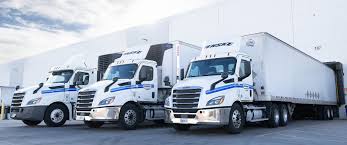Teva Pharmaceutical Industries Ltd. (NYSE and TASE: TEVA) held an “Innovation and Strategy Day” today, in which it discussed the future of its (non-generic) biopharmaceutical activity. The company sees revenue from its three leading drugs: Austedo, for treating involuntary movements; migraine prevention treatment Ajovy; and long-acting schizophrenia treatment Uzedy, reaching at least $5 billion by 2030. This compares with $2 billion for the three products combined in 2024.
The company has confirmed its guidance for 2027. It expects an operating margin of 30%, which compares with 13.3% in the first quarter of 2025, thanks to its existing innovative products and those in line to enter the market, and also thanks to modernization and improved efficiency, which it sees saving it $700 million. Free cash flow is expected to reach $2.7 billion in 2027 and $3.5 billion in 2030.
Uri Hershkovitz, manager of hedge fund Bennu Pharma and a longstanding analyst of Teva, said that the guidance was strong, and that the market had expected this, with the share price rising some 9% in the previous five sessions. Today, the stock closed 1.57% off. The company has a market cap of just over $20 billion.
Teva CEO Richard Francis said that the company had added $1 billion to its innovative revenue in the two years since he took up the post, and had broken through the glass ceiling attributed to Austedo. According to the company, this product could reach revenue of $2.5 billion in 2027 and $3 billion in 2030. Teva’s guidance is largely based on this product.
Francis added that when he came to Teva he sensed the market’s skepticism about the company’s ability to return to innovative leadership. Since then, he said, a new product, Ajovy, had been launched, and positive results had been obtained in advanced clinical trials of two other products.
Teva plans to submit a second long-acting schizophrenia treatment, Olanzapine, for US Food and Drug Administration (FDA) approval in the second half of 2025. It sees duvakitug, a treatment for inflammatory bowel disease with potential expansion into additional indications, which achieved good phase II trial results in late 2024, having peak sales potential of up to $2-5 billion. Dari, a dual-action rescue inhaler for asthma that is in phase 3 trials, is seen as having peak sales potential of about $1 billion.
Emrusolmin, which Teva describes as “a potential first-in-class treatment for Multiple System Atrophy, a rare and fatal neurodegenerative disease that currently has no approved treatments,” is seen as having peak sales potential of more than $2 billion, while the potential for the company’s treatment for celiac, which was granted fast-track designation by the FDA yesterday, is put at more than $1 billion.
RELATED ARTICLES
Francis said that there would be launch after launch, not just of five plans, but of five drugs, some of which were for several indications. He said that the potential was even greater than it looked, and amounted to $10 billion, although he added that there were no major patent expiries on the horizon. In generics, the potential is for the launch of five new biosimilar products by 2027, in addition to the thirteen existing ones.
Published by Globes, Israel business news – en.globes.co.il – on May 29, 2025.
© Copyright of Globes Publisher Itonut (1983) Ltd., 2025.




